1
HOME > Tips & Advice >
HOW TO FIND A QUALITY BUTTON-UP SHIRT
Written by Ivan Yaskey in Tips & Advice on the 1st July 2022
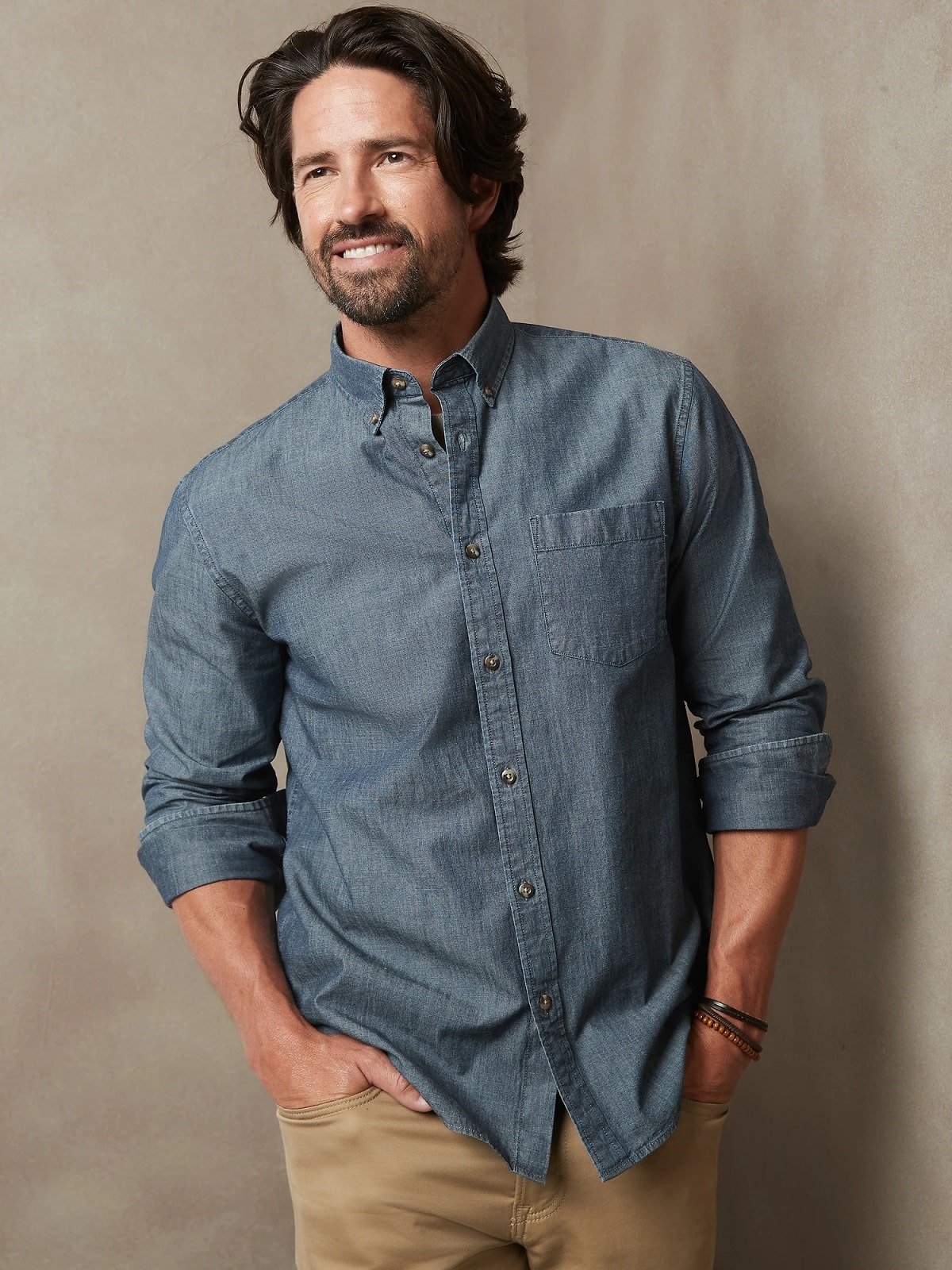
The suit is the frequent subject of guides instructing you in proper fit, construction, and material. Yet, underneath and independently, the button-up shirt – sometimes called an oxford – goes ignored. However, a poorly fitting shirt shows, often through straining around the buttons or billowing or bunching materials and appears as a significant oversight when you’re attempting to dress well. Instead of winging it – especially when you’re attempting to build up a long-term classic wardrobe – here’s what you should look for:
Fit
Unlike with a suit, you can generally find a decently fitting shirt off the rack – even online, at that – that just requires minor alterations. Drastically overhauling a shirt, by contrast, involves taking out all the seams and piecing it back together – and that’s only possible if it fits loosely. Should it be too tight, you’ve basically bought a dud of a garment. To get started, shirt fit mirrors that of a suit. You have your classic or traditional structure that dominated for most of the 20th century: This tends to be more spacious but can end up appearing unflattering on a range of body sizes. Then, there’s a slimmer – and sometimes skinny – fit that’s designed to add length to your body and appears less bulky. In between, a “regular” fit suits bodies with a bit more muscle or a rectangular shape. In this regard, consider trying on a few button-up shirts in a physical store to know what better suits you, and know your measurements to shop online in the future.
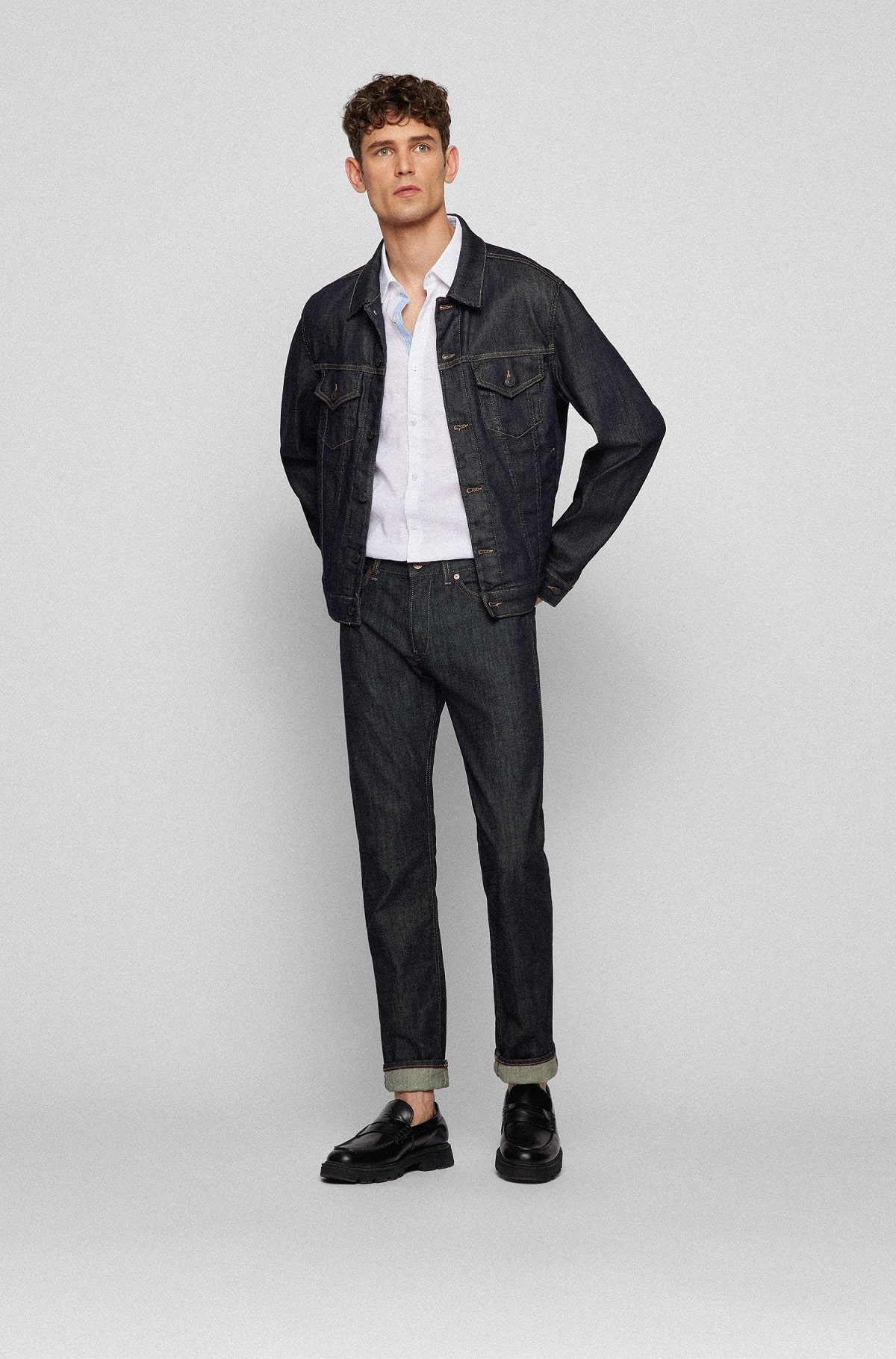
Within these general parameters, the following signal a quality fit:
- You can fit two fingers in between your neck and the collar – no more and no less.
- The cuffs graze your wrist without constricting your movement.
- You can raise your arms and not feel straining around your shoulders.
- The shirt doesn’t have “batwings,” or extra fabric around the arms.
- The shoulder seams align with your own body’s form, rather than extend or appear strained.
- The fabric and buttons don’t appear stretched across the chest, with obvious gapping, but the material isn’t too loose, either.
Design Factors
Also like with a suit, you can break a button-up shirt down into individual design elements:
Pockets
Let’s start simple and straightforward. Dress shirts rarely feature pockets, while informal button-down and camp shirts may contain up to two pockets. In between, a one-pocket button-down tends to be the most versatile item in your wardrobe.
The Placket
The placket is the double strip of fabric where the shirt’s button holes are located. Similar to pockets, the less visible a placket is, the more formal the garment. An “American” placket has a clearly sewn strip down the front of your shirt, while a French or European placket is folded over and features less stitching. As a third option, a hidden placket – a flap of fabric goes over the row of buttons – is increasingly common due to the clean, almost seamless appearance it creates.
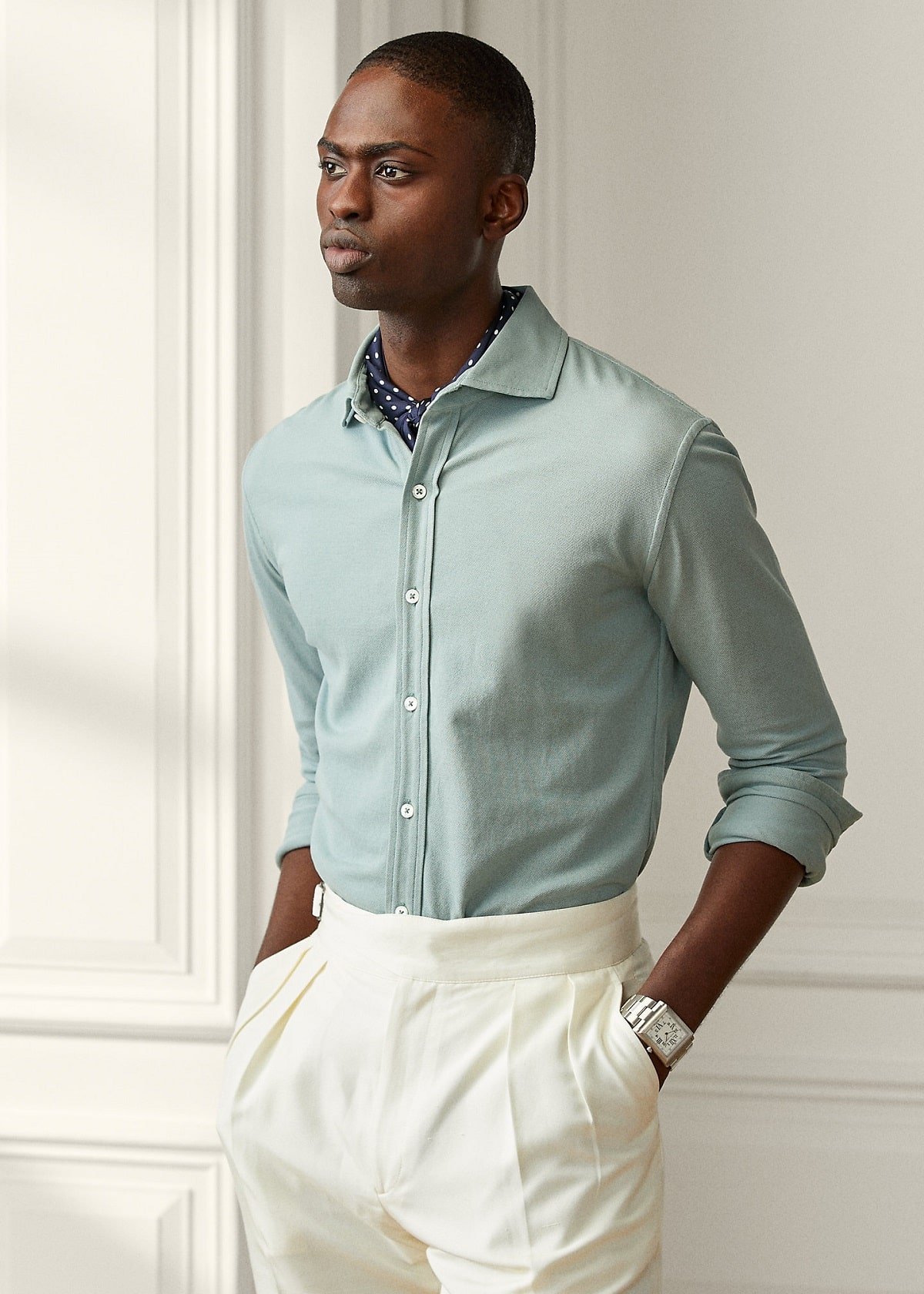
The Back
The back frames the shirt’s fit nearly as much as the front. We tend to not think about it – out of sight, out of mind – but if you decide to take your jacket off, straining, bunching, and any fit issues will also be present here. To start with the upper half, button-up shirts frequently feature a yoke – that stitched block of fabric going across the back of your shoulder – with darting or pleats underneath that assist with movement. Yokes feature a one- or two-piece design: Generally, the higher the price, the greater the likelihood the shirt will have a split yoke. Then, when it comes to pleats and darting, they tend to give the shirt more of a fitted, tailored look and limit the possibility of excess material.
Cuffs
Starting in the second half of the 20th century, barrel cuffs surpassed French cuffs on men’s button-up shirts. As such, French cuffs – which require a set of cufflinks – tend to be reserved for dressier occasions. Getting this distinction out of the way, cuffs should hit right at your wrists – not overlap with your hand nor shrink back into your suit jacket. With French cuffs, this gives you the option to highlight your set of cufflinks. Beyond this, your cuff shouldn’t be so loose you can slip your hand through it while it’s still buttoned.
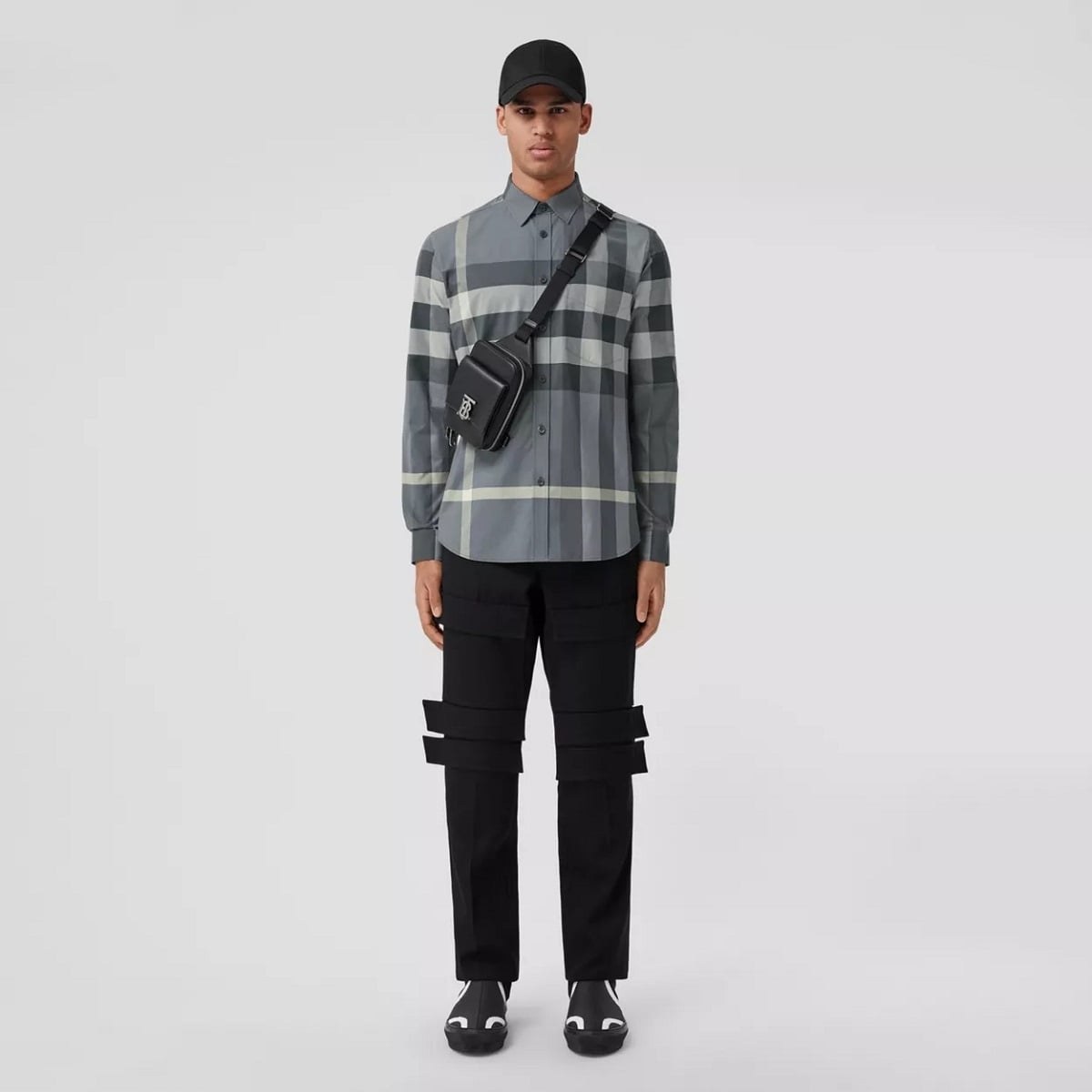
Collars
A collar can indicate how well-made a shirt is. Something fused – involving two pieces of fabric sewn together with a lining in between – delivers a thicker, more substantial feel and lasts longer. A non-fused collar is constructed in a similar fashion but with glue, and with time, the parts will detach. You also may notice waves or uneven texture around your collar after you wash your shirt. An alternative with more casual button-up shirts is a soft collar: This contains no interlining and won’t feel stiff. A button-down shirt, furthermore, secures the collar to the shirt’s body with a set of small buttons.
Collars on button-up shirts fall within the following types:
- Point collars are increasingly the dominant option. These stand out with defined, angular tips and sit in a narrower formation with the neck. Some say this design can elongate the face and neck.
- Spread collars are a more casual choice in which the points sit closer to the shoulders and tend to have a more commanding presence.
- A rounded collar – sometimes called a “club” or “granddad” collar – has a stiff form with rounded edges.
Hem
There’s no right or wrong choice here. Instead, think about whether you’ll be tucking in your shirt – formal to smart-casual – or wearing it out. A shirt with a tail or curved hem is designed to be tucked in. However, in this scenario, avoid excessive fabric that will be visible around your trousers’ waistband. As the alternative, a straight hem is designed to be worn untucked. That isn’t to say you can’t tuck it in, but you risk having it ride up in the back if the garment doesn’t fit well. Although this hem style is reserved for more casual shirts, like camp collars, you’ll occasionally see it on button-downs angled toward smart-casual dressing.
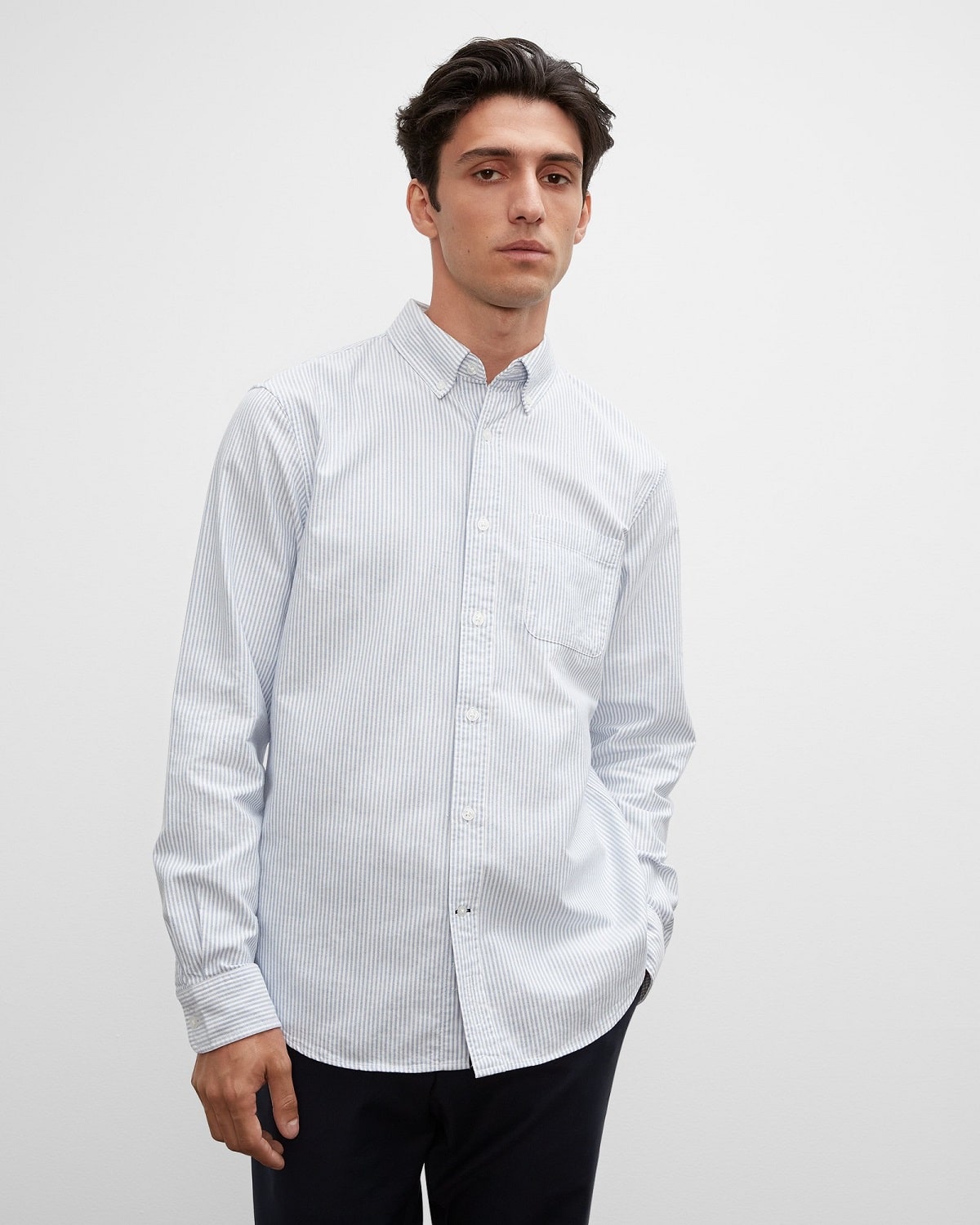
Fabric
There’s debate about whether a mixed-fiber button-up is serviceable – think cotton with just a touch of polyester or spandex – or if you should go with all natural fibers. Truth be told, both have their benefits. That hint of polyester or spandex results in a slightly more flexible material that irons better and is less likely to wrinkle. However, these garments can feel cheap and may show their wear sooner. All-natural fibers – think cotton or linen – provide a greater degree of breathability, are more absorbent, offer a sturdier feel, and tend to uphold their appearance for longer. That said, ironing is inevitably involved, and in certain cases, the fabric may start to show wrinkles throughout the day. Chances are, you already have both shirt fabrics in your closet, so determine what fits you better, based on maintenance and comfort.
With this dichotomy aside, button-up shirts are made with one of the following types of fabrics:
- Plain weave: This is your standard cotton or cotton/poly material. However, multiple types of plain-weave fabrics are out there, with poplin being more commonly used with shirting. Poplin features finer horizontal ribbing – so it’s less likely to have a defined grid appearance. Compared to all types listed here, plain-weave materials tend to wrinkle easily.
- Twill: This fabric utilizes a more diagonal weave, feels thicker due to a greater number of threads, and tends to wrinkle less.
- Oxford: Oxford or Panama fabric uses a basket-style weave to create a smoother texture and is considered the standard for formal button-ups.
Within this framework, further think about:
- Stitching: The finer and denser the stitching, the better the shirt’s construction. Beyond dress shirts, you can see this principle with workwear, which often has double- or triple-stitching for strength.
- Seams: Somewhat different from stitching, more formal shirts will feature single-needle stitches, as they’re less visible, produce a cleaner appearance, and are less likely to pucker from washing.
- Patterns: Higher-quality button-up shirts ensure patterns match at the seams and shoulders for a more cohesive, streamlined appearance that isn’t broken up.
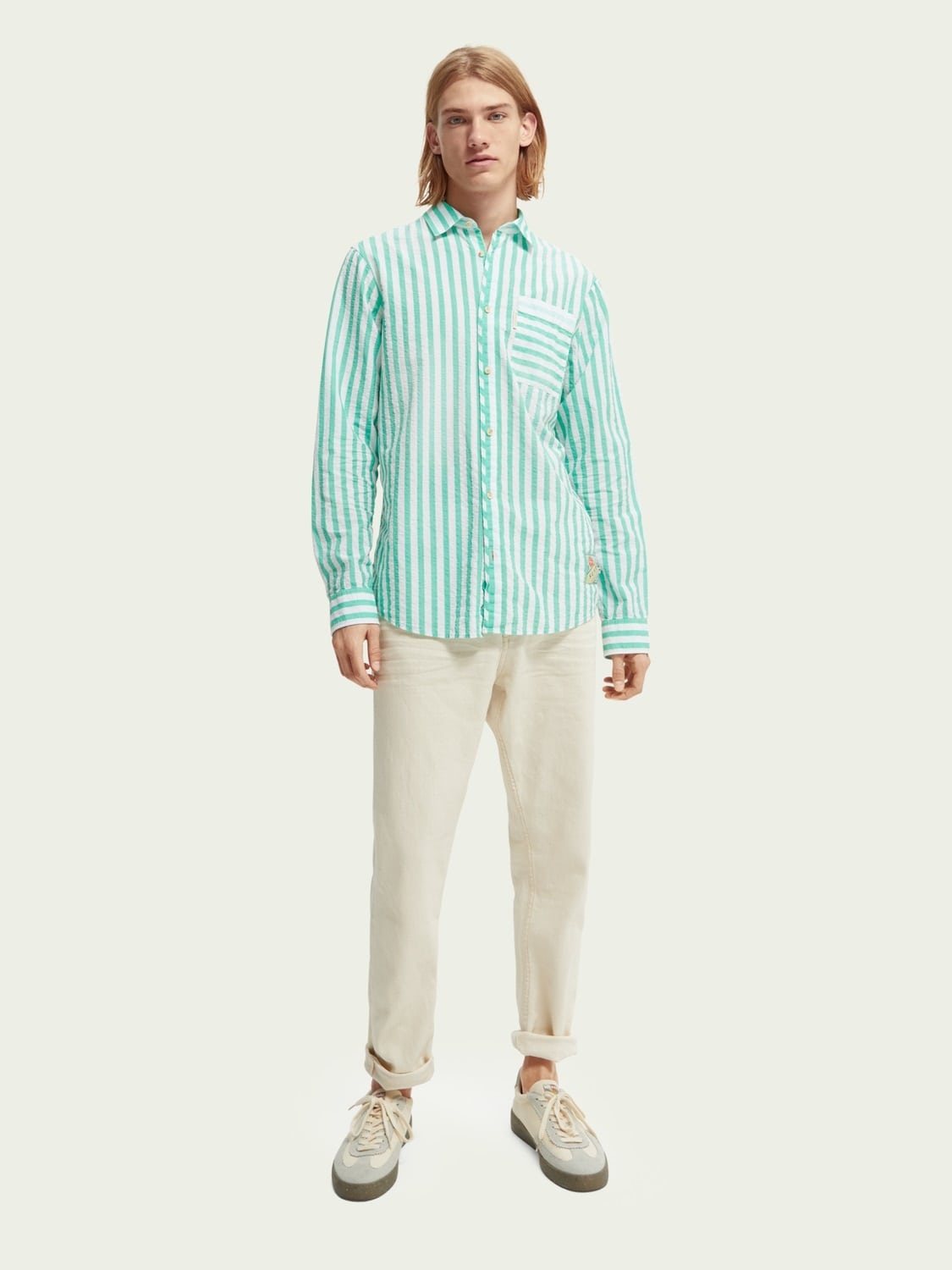

Trending
2
3
4
5
6
7
8
9
10









